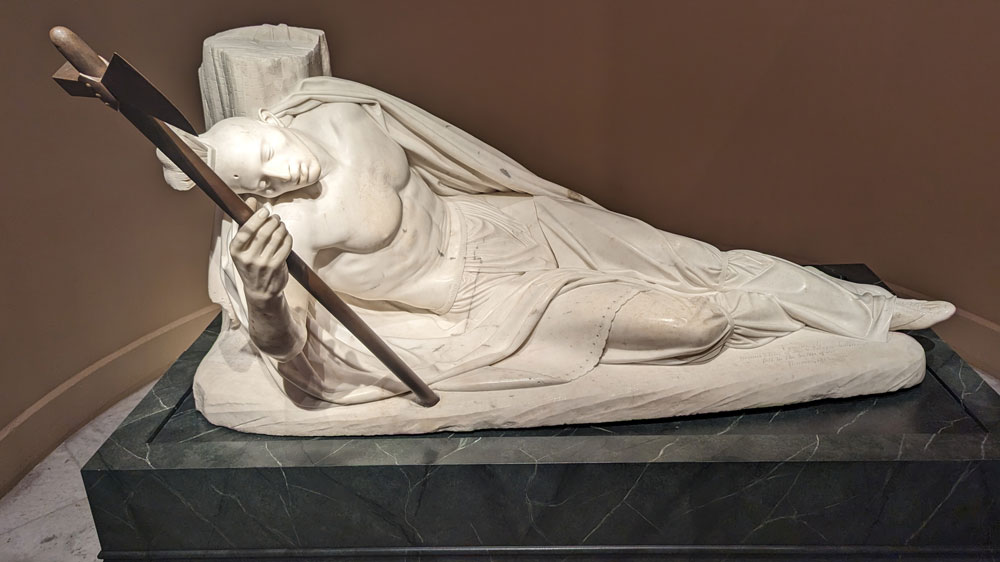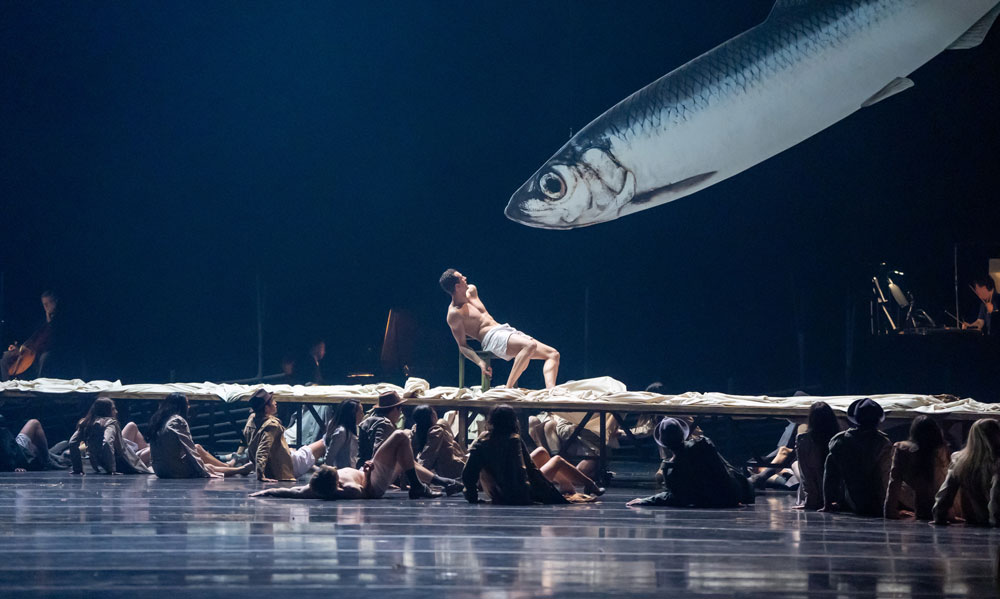
Even with the staggering number of choices Chicagoans have to satisfy our cravings for music, theater, dance and the visual arts, the entertainment playing field can never get too crowded. Having only been open a year, the city may be just beginning to realize what an asset Wrightwood 659 has already become. The sedately serene Lincoln Park gallery’s current exhibition, Tetsuya Ishida: Self Portrait of Other, is so exceptional that it doesn’t stop at just being art.
The hope of every artist is to not only communicate their vision of the world; but to also make a comment about it. Each of the 70 paintings in the Self Portrait of Other exhibit is that kind of dialog. In many ways, the messages are so brazen they could be considered assaultive. And it’s the message that people respond to first. Curiosity helps you see and appreciate the art that drives and supports the artist’s visual commentary.

Even though it’s impossible to decipher the absolute source of Ishida’s angst, the pain found in many of his works is the most declarative thing about them. For some viewers, that’s where their journey with Ishida may stop as they examine repeated images of melancholy overlaid on a highly mechanized relentlessly conformist world.
Seeing the show in its entirety dispels that singularity. Estimates vary on the number of paintings Ishida completed. The official number, corroborated by his brother, Michiaki Ishida and gallerist, Yumie Wada, stands at 180. Most if not all of them done after his art studies at Musashino Art University. He may well have been influenced by the work of Ben Shaun, a prominent social realist painter whose work often carried a distinct message of protest. Shaun’s series of paintings capturing the environmental and human costs of the U.S.’s thermonuclear tests in the Bikini Atoll received global attention. Those tests had fatal consequences for a small Japanese fishing boat from Ishida’s small hometown on the country’s coast. Ishida saw the images as a child and it’s even claimed that later in his life he said that Shaun’s work inspired him to pursue art. The paintings and sketches could easily induce fearfulness; especially in the young, which gives credence to his brother’s statement that he feels there is a lot of fear in Tetsuya’s art. The influence of anime and other Japanese cartoon formats are easily found in his art as well.

But the times in which an artist lives can also heavily impact their output, as it did with Ishida. Born in 1973, he came of age when Japan, once the innovation powerhouse of Asia and beacon of Asian prosperity, was facing the bleakest of economic reversals. It’s as if the economy stopped and optimism about the future was obliterated. Concentrated in the 90’s and known as the lost decade, the heaviest toll fell on the young who felt unneeded and futureless. The collective shock caused many thousands of them to turn inward; or in extreme cases, completely shut themselves away from the world.
After art school, Ishida was among the struggling. He worked at a print shop and as a security guard. But his devotion to his art never waned allowing him to produce roughly 18 works a year until his death in 2005 at 31. When considering the amount of precision and detail invested in most of his paintings, that modest number seems remarkably high. Letting your eyes roam over a work like Recalled (1998), where a man lies disassembled in a box like a high value commodity with people surrounding him as if in ritual, will expose that meticulousness. A beautiful woven tatami mat used as the flooring for the scene takes up much of the large canvas. Like so many of Ishida’s works, the painting is subtly spellbinding. Slowly you notice the elaborate detail needed to execute this wonder; with its exquisite brushwork and celestial sense of color extending down to that tatami mat. Or Search (2001), the only work that Ishida received notable recognition for, and the validation that goes with it, while he was living. It’s an oddly un-playful painting given the context. An extravagantly detailed train set, with a realistic landscape of tree covered hills at its center, sits on display before a large sunny window. But there’s a human form in the middle of the scene. Lying in a fetal position, it looks as if his body is in transformation, becoming a part of the train set’s topography. The human form is frequently altered in Ishida’s worlds. Usually he uses only the face and places it on the front of airplanes, protruding out of building’s, or on the heads of insects. But he can also reimagine the entire body as he does here. A look of incomparable benevolence covers the man’s face. Search becomes another transfixing scene that defies convenient interpretation but worthy of endless appreciation. Again, careful thought is invested in every object on the canvas. It’s impossible not to marvel at the conceptual composition or the beauty of his technique.

The Ishida retrospective has only two showing worldwide. The first held in Madrid’s grand Palacio de Velazquez just closed in September before opening here in Chicago on October 3rd . Thanks to curators at Wrightwood 659, we should once again count ourselves fortunate. The opportunity to see how one extremely gifted artist represents the world he knows through the unsettling lens of a generation without a vision of hope is rare. Oceans of ink have been used to express the same sentiments in text. Ishida’s art gives that message infinitely more power.

Gratefully the retrospective, displaying nearly half of the artist’s total production, includes both his earliest work in addition to paintings he completed at the end of his tragically short nine year career. It’s startling to see his skills as an artist grow in the span of a few years. How he came to insert nuances of difference and subtlety to what we initially see as the same facial expression.
Teresa Velázquez, Head of Exhibitions of Spain’s Museo Nacional Centro Arte, pointed out that Madrid’s Palacio de Velazquez is an imposing and opulent structure inside and out. Wrightwood 659 was designed for contemplation and intimacy. The perfect environment for enjoying beauty. You can walk up to a painting and get close enough to sink inside and explore. The paintings in the Ishida exhibition provide lots of opportunity for that. You’ll likely walk away with as many revelations as questions.

The size of the exhibit provides enough sweep to expose the thematic richness that Ishida may not be getting enough credit for. His take on corporate acquiescence in his 1996 Toyota Ipsum could be considered derisive. Stepping up his attack on the status quo to acts of defilement in an untitled 2001 piece, where a row of young office workers with mountains of hurt and anger in their eyes collectively sit spoiling office equipment seems hardly an expression of resignation. In Abortion (2004), a young woman lies on a narrow bed with her back to you. A young man sits on the side of the bed, eyes down. It’s a solemn and personal scene and the fact that the bed straddles what looks to be a dry stream bed is peculiar. And then the eye falls to a small blue object lying on the ground directly in front of the man that will likely cause you to silently gasp.

Ishida had a lot to say about a lot of things. He had also hoped to leave Japan. Wondering how doing so would have affected his art is of course futile. That we can at least see how his vision, message and talent manifested into astonishingly memorable art, even through a small decade long window, is still a wonderful gift.
Tetsuya Ishida: Self-Portrait of Other
October 3 – December 14, 2019
Wrightwood 659
659 W. Wrightwood Ave.
Chicago, IL 60614
773-437-6601
www.wrightwood659.org


